Sowing Garden Peas: Either Start Them Indoors In Trays Or Direct Sow Outside

VEGETABLES > PEAS > SOWING
Reviewed By PETER LICKORISH

Peter is a Horticulture Lecturer and self-employed Horticulturist, with a passion for diverse areas of the industry - from garden design to the science behind plant growth and propagation. He has completed the Royal Horticultural Society’s Master of Horticulture (MHort) Award and lectures on RHS courses at Bedford College.
Contributions From EMILY CUPIT

Emily is a Gardening Writer, Photographer and Videographer from Derbyshire, UK. She is the Founder of Emily's Green Diary - a community of more than 75,000 people who share in her gardening journey.
IN THIS GUIDE
PEAS GUIDES
Harvesting
Support
Sowing
If anyone tells you that they don’t much care for Garden Peas, you can draw a sound conclusion with a high degree of probability: that person has eaten frozen or tinned peas, but not garden-grown ones.
Peas fresh from the garden have a rich taste and satisfying mouth-feel that cannot remotely be rivalled by commercially-produced alternatives.
So how good do they taste?
Well, many gardeners who are picking their Garden Peas cannot help shelling a few pods and enjoying fresh-off-the-vine peas on the spot!
You may do so too – no, you will do so too – if you grow Garden Peas in your yard.
| Difficulty | Moderate |
| Equipment Required | Gardening gloves, trowel or flat hand spade, draw hoe, seed tray |
| When To Sow | March or April through June |
| Planting Aspect | Full Sun / Sheltered / South-Facing |
Garden Peas are not difficult to grow if you follow these steps:
- Sow indoors in trays
- Prepare the planting site
- Transplant (or sow in open ground)
- Water in
This process is explained in more depth below.
1) Sowing Indoors in Trays
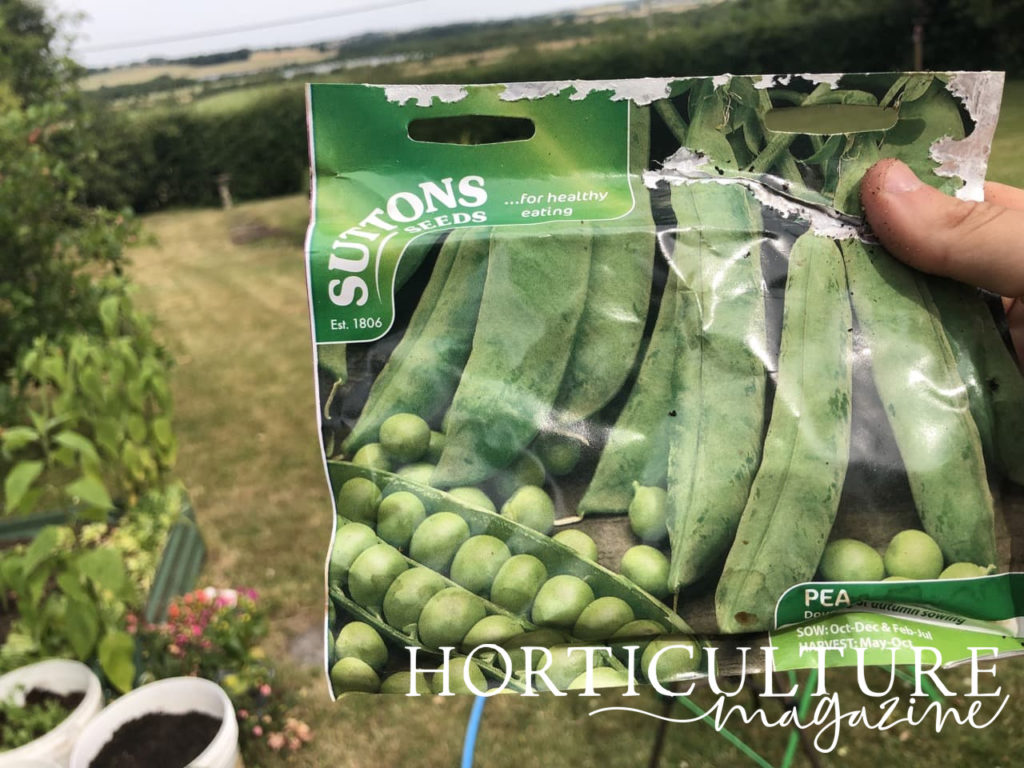
You face a choice when you want to sow garden peas: sowing seeds indoors in trays or directly outdoors.
If you live in a region where spring weather is late to arrive and the growing season is abbreviated, we suggest you sow seeds in trays and then transplant out in open ground.
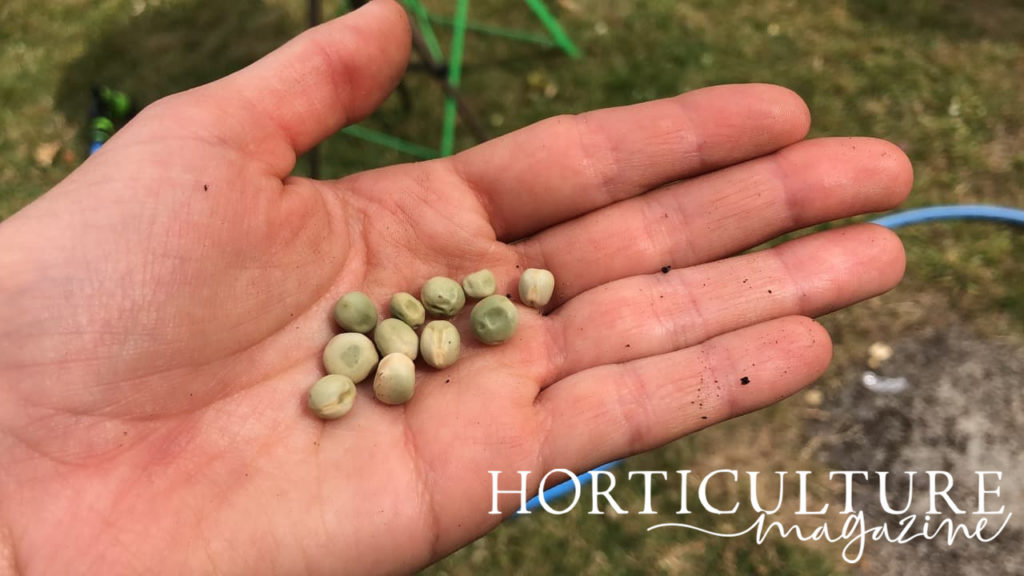
If you live in a region where the ground is not cold and soggy by early April, then sow directly outdoors.
In most regions of the UK except the few warmest ones, you can sow garden peas until June.
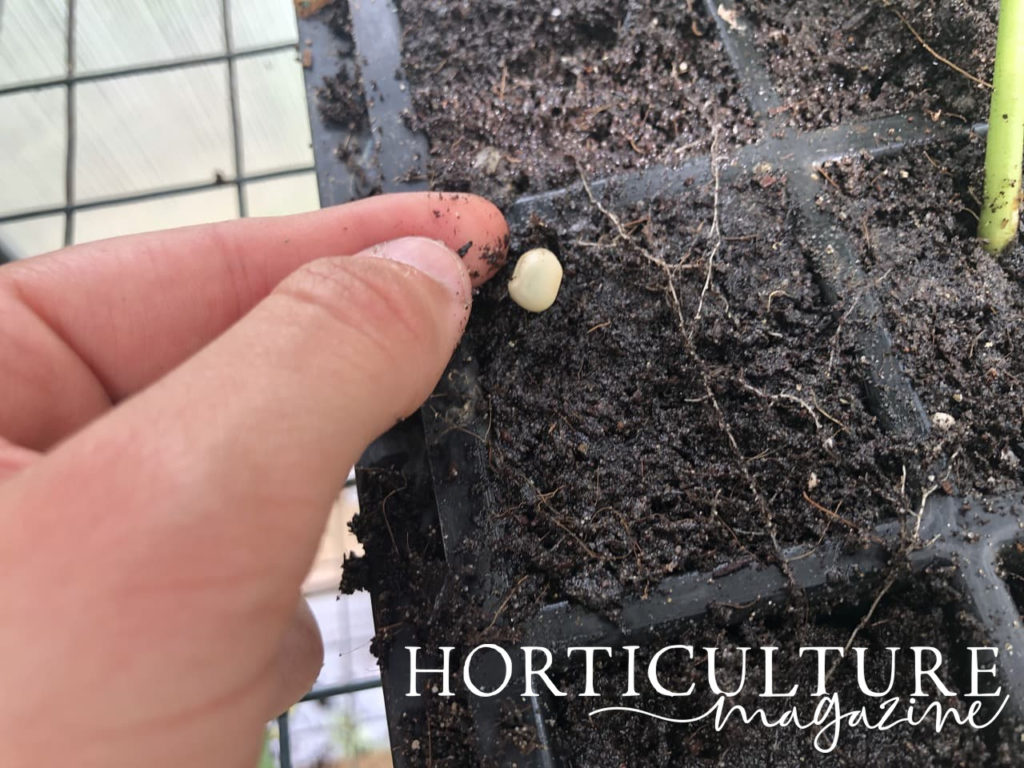
If you sow seeds indoors do so in trays.
When it is time to transplant the seedlings in your garden, you can cut them down along each end of the tray to release the block of plants or scoop them out for ease and efficiency.
Peas hate root disturbance, which is why we do not recommend separating out individual plants.
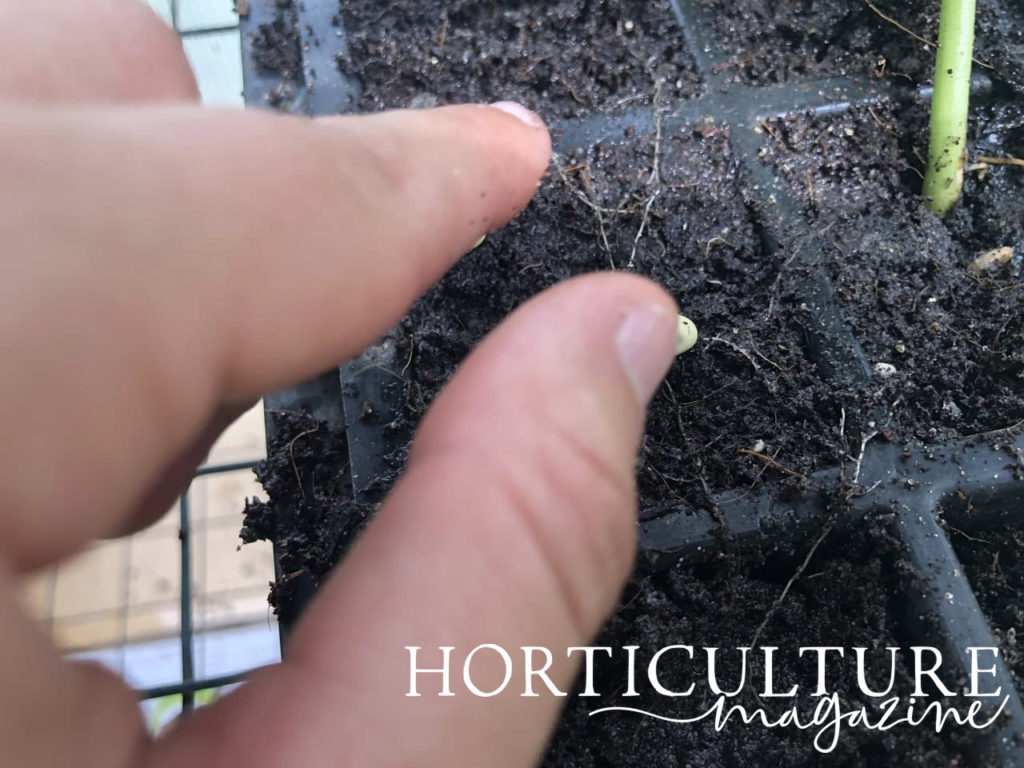
After preparing your planting site, you can dig out a similar divot and simply transplant the full row of seedlings.
A narrow trowel or flattish hand spade is perfect for the purpose.
Water in the transplanted divot-row.
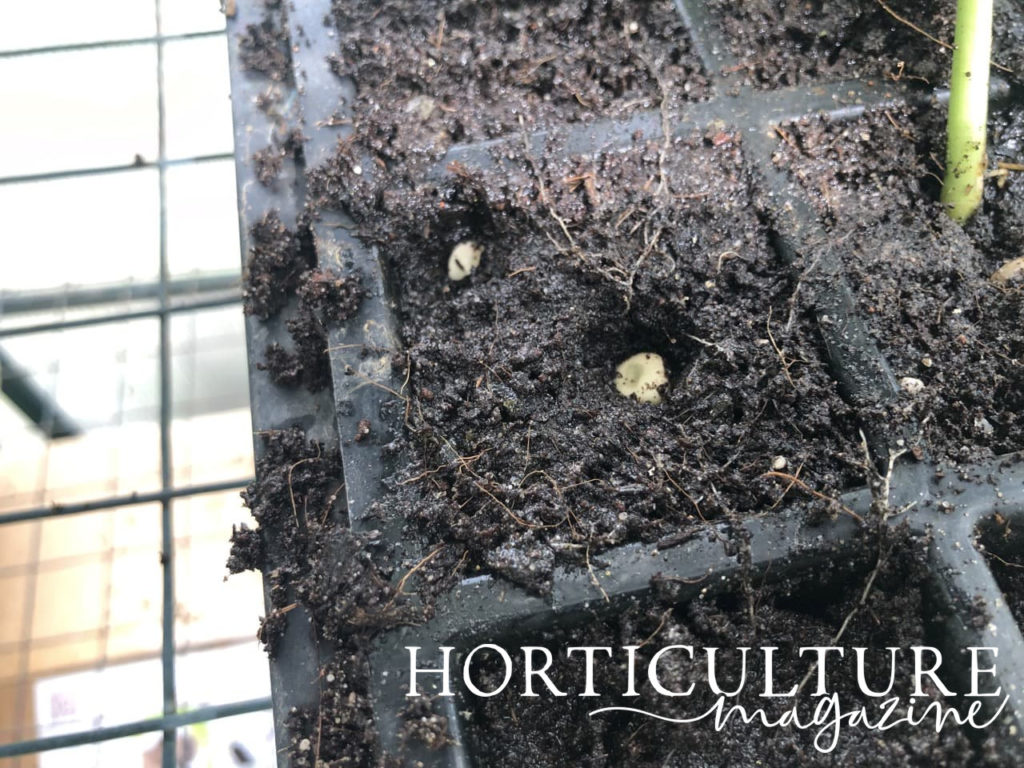
Such transplanting may be done around the last frost of the season.
2) Prepare The Planting Site
Whether or not you sow directly into open ground or transplant later, you need to choose a good site and prepare the soil.
Do not sow Garden Peas in ground where you have grown Garden Peas or any other legume in any of the previous two seasons.
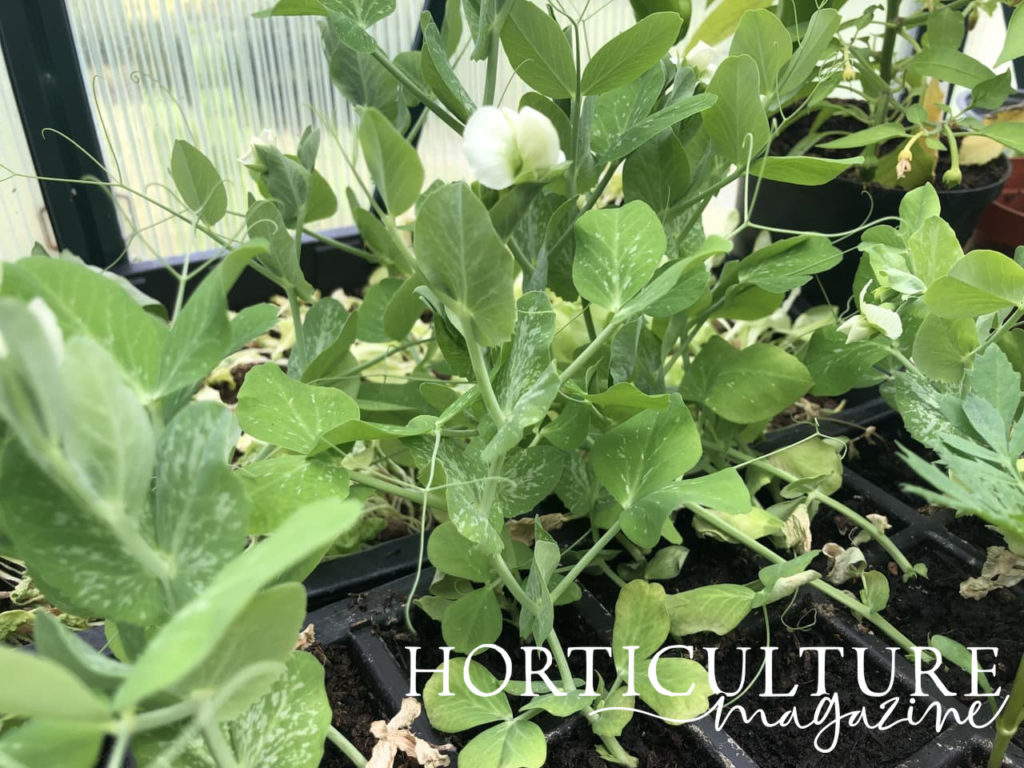
The planting site should be sited in full sun but must be sheltered.
A southerly aspect is best otherwise an east-facing or west-facing spot should be chosen.
A mixed loam amended with a generous amount of organic compost or well-rotted manure will do very well.
The ground must drain well, otherwise consider improving drainage or sowing in a raised bed.
Soil pH level should be between 6.1 and 7.3 – slightly acidic to slightly alkaline.
Garden Peas will not grow very well if the soil pH is outside the recommended range.
3) Sowing In Open Ground
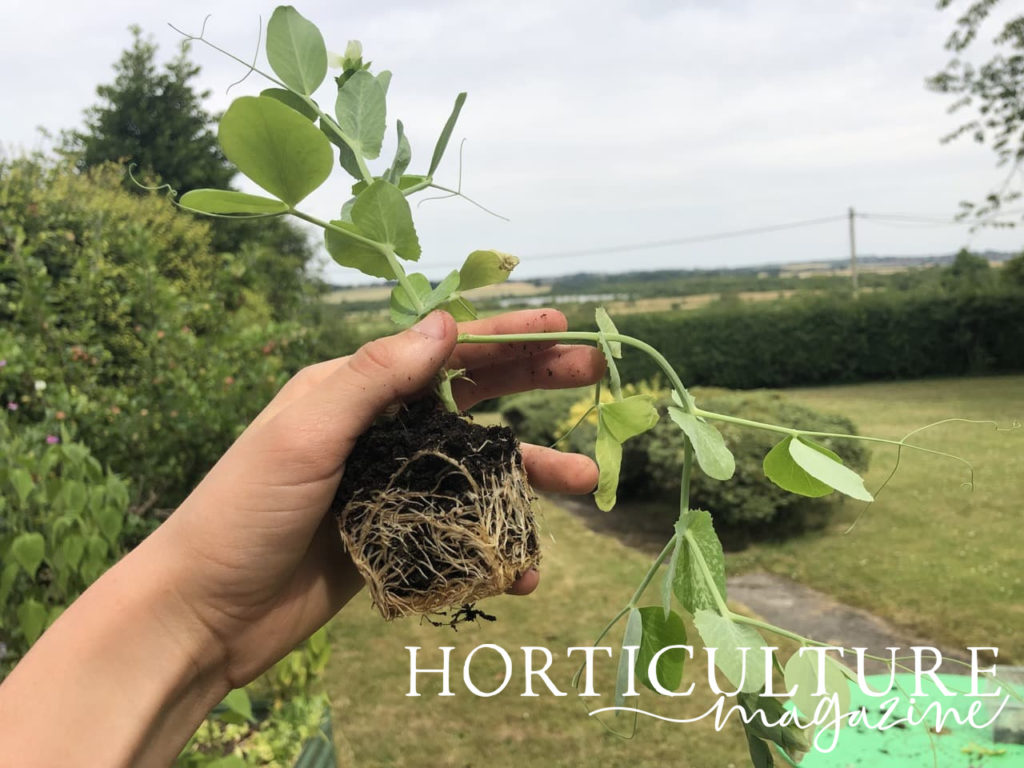
Depending on your location in the UK, any time from mid-March to mid-April a week or two before the last expected frost date and when the ground is not overly cold or wet, you can start to sow Garden Peas seeds.
In the UK you can sow Garden Peas seeds until June and grow them until about October (so long as you do not live in a warm region and get struck by a heatwave!).
If your ground does not drain well or if you live in a very wet region, make a raised bed.
Sow seeds at a depth of 2.5-3cm, and spaced by about 7cm.
Traditionally, this is done by pulling a draw hoe through the soil to create a flat-bottomed trench up to 5cm deep.
The base can be watered and seeds then be placed at their correct spacing.
Cover the seeds with soil, such as by raking loose soil over the top, and pat it down; do not pack it in.
“As well as trays, lengths of guttering make an ideal option for sowing peas into,” shares Master Horticulturist Peter Lickorish.
“Drill base holes at 5-10cm intervals and cap the ends before filling with moisture-retentive compost.
Sow at the same spacing, 7cm apart, usually in a double or staggered row.
“Once the plants are 15cm high and the weather is favourable, the plants can simply be slid out of the guttering into a prepared trench of the same size and depth.”
Rows should be spaced from 20-60cm apart; exactly how much depends on the ultimate size of the Garden Peas cultivar that you are planting.
The greater the height and spread, the wider the spacing.
4) Water In
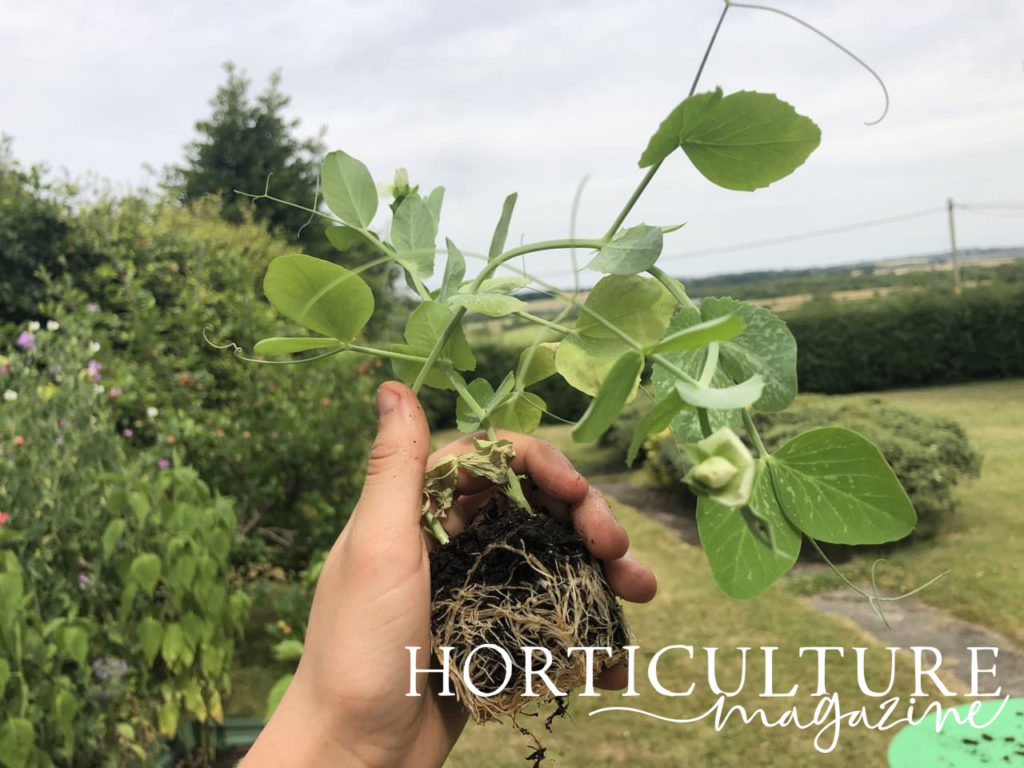
Water the sown area.
Accounting for rain, Garden Peas should get 2-3cm of water per week.
The trick is never to let the soil dry out completely nor to let it get waterlogged – a continuous level of moisture will suit these plants best.
Soon after seedlings sprout apply a layer of organic mulch around them.
When the plants are flowering and when they are developing pea pods, the amount of water should be increased.
It is important to monitor soil moisture during this phase of the plant’s growth.
You do not need to use a moisture meter but do eyeball the ground and push a finger 2-3cm into the soil to be certain that the soil has sufficient moisture beneath the surface.

